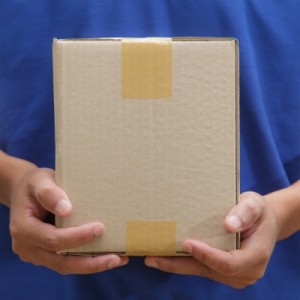 How often have you received a package you’ve been eagerly anticipating and found the entire experience a complete disappointment? More often than not, the shipping envelope or box was underwhelming (and somewhat beaten up from its journey), the product presentation inside was non-existent, and finally, there seemed to be a potpourri of everything this vendor had available in its promotional arsenal, i.e., mini-catalogs, product inserts, a customer satisfaction survey, a packing slip and more.
How often have you received a package you’ve been eagerly anticipating and found the entire experience a complete disappointment? More often than not, the shipping envelope or box was underwhelming (and somewhat beaten up from its journey), the product presentation inside was non-existent, and finally, there seemed to be a potpourri of everything this vendor had available in its promotional arsenal, i.e., mini-catalogs, product inserts, a customer satisfaction survey, a packing slip and more.
Most marketers would agree — the after-sale contact is the best opportunity to turn a first-time customer into a loyal and returning one. It should then come as no surprise that all aspects of your shipment — from the mailing label to the packing materials — are critical to future success.
Let’s review a brief synopsis of the key packaging essentials to create a great customer experience:
Outside
- Select a tough exterior packaging to make certain the product is protected. This may be nothing more than a Tyvek® envelope or a corrugated box.
- Brand it. That means you either have your logo printed on the package or, less expensively, a personalized shipping label affixed to the envelope or box. Don’t miss the opportunity to promote your company name.
- If it’s a corrugated box, you’ll need to make a basic decision: White or Kraft (Brown). White is definitely preferred as far as aesthetics, but that’s before they’re manhandled by UPS, FedEx and other delivery services. Kraft is often the smarter choice as it hides all of the scuff marks.

Inside
- Determine whether your product requires an interior box. First and foremost, you need to protect the contents, and secondly, it’s an opportunity to make a statement that it’s something special. The addition of an inner box is often the difference between an unqualified “Wow” or just a “ho-hum” from a customer.
- How much do you want to know about the buyer? It’s an excellent time to capture either demographic information (age, gender, size of business, etc.) or the overall satisfaction level with your website and product. A cautionary note here: Keep the survey short and sweet. You don’t want to make it too daunting by asking a long list of questions. Also, if you want to ensure that your response rate is more than satisfactory, offer a discount to incentivize a completed and returned survey (and yes, it should be postage-paid — or even online).
- What is the next logical product(s) for this customer type? Now is the ideal opportunity to add a flyer or mini-catalog focused on the products this customer will most likely be interested in purchasing. If you’ve delivered the item on time (or faster) and your product meets and exceeds expectations, the best time to capture a second order is now. Once again, if you want to increase your response rate, provide a discount with perhaps a short reaction time (two to three weeks) to produce a sense of urgency. Warning: Do not go overboard with inserts. Just one or two will suffice; anything more is overwhelming, adds additional weight and postage, and will more than likely be tossed in the nearest trash can.
- Many companies also throw in non-competitive literature to earn additional revenue and provide the customer with more unique sales offers. My experience is that this approach is overkill (the “too many inserts” syndrome described above) and the internal inventory management of these flyers and shipping envelope inserts more than outweighs any revenue gained.
- Finally, don’t forget the packing slip. This is your opportunity to capture all of the key information: Customer Name, Address (Billing & Shipping), P.O. number (if relevant), Contact Name, Quantity and Product(s) purchased. If space allows, it’s also the time to print a special offer on the packing slip or a tie-in reminder to the promotional literature you’ve placed in the package.
One more tip: Never take your eyes off the competition. Be sure to shop your competitors and regularly place orders with them. This will not only allow you to judge product quality, but also give you insights into their packaging philosophy. Doing this could foster new ideas and create a unique packaging path for your company. It’s simply a matter of thinking inside the box.
What are some ways you’ve thought outside (or inside!) the box when it comes to packaging and shipping your products? We’d love to get your insight! Leave a comment below, or connect with us on Facebook, Twitter or Google+.
